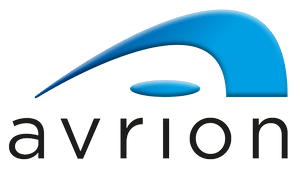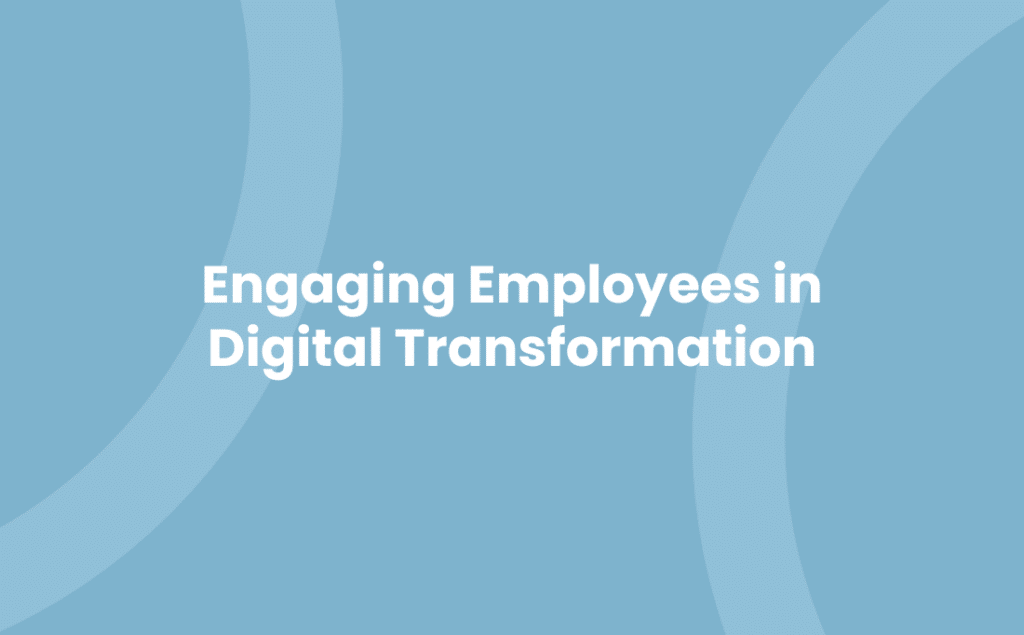In the ever-evolving digital landscape, businesses can’t afford to lag behind. It’s not just about adopting new technologies; it’s about transforming the way you engage your employees. Welcome to the world of digital transformation employee engagement.
It’s the secret sauce for companies striving to maintain a competitive edge and foster a culture of innovation. But what does it really mean? And more importantly, how can you make it work for your business?
Understanding the Concept of Digital Transformation
Digital Transformation refers to the integration of digital technology into all areas of a business, fundamentally changing how one operates and delivers value to customers. It’s a shift that requires organisations to continually challenge the status quo, experiment often, and get comfortable with failure.
Digital Transformation isn’t about updating your technology but about upgrading your strategic thinking. It means going beyond traditional roles like sales, marketing, and customer service. It encourages a new type of employee engagement, known as the digital transformation employee. This concept promotes a culture where employees are encouraged to come up with innovative solutions and contributes directly to business success.
In the context of employee engagement, the digital transformation involves creating digital workplaces, optimising workflows with streamlined processes, and leveraging technology to create a better working environment. By doing so, you would notice an increased level of engagement among your employees. They would feel like they’re part of the company’s success, which could lead to better results in productivity and customer satisfaction.
In essence, understanding digital transformation and how it involves employees forms the premise for executing a successful digital strategy. It fosters a corporate culture of collaboration, innovation, and engagement, steering the company towards its full digital potential. Remember, digital transformation is more than just about technology, and it involves a change in leadership, thinking, encouraging innovation, and new business models. It’s about finding new ways of engaging with employees and delivering value to customers.
To fully embrace and navigate digital transformation, it requires flexibility, thoughtful planning, and a commitment to invest in the next wave of technology tools that enhance the employee experience. Always remember, the better engaged your employees are, the more productive and motivated they will be. Don’t be afraid to encourage digital dexterity amongst your team members and soak up the benefits of a full-fledged digital transformation in your business.
The Impact of Digital Transformation on Employee Engagement
Brace for a deep dive into the specifics of the intersection of digital transformation and employee engagement. You might notice patterns that reinforce or challenge your current understanding about how technology, when integrated strategically, can steer employee engagement in exciting directions.
Primarily, digital transformation extends its influence through three key areas, accessibility of tasks, transparency of the workflow, and recognition of efforts. Each, as you’ll see, plays an essential part in the grander scheme of heightened employee engagement.
Imagine a scenario, for example, where leveraging technology accelerates task accessibility. This advancement could democratise work distribution, enabling employees to take control of their workload and deadlines. Additionally, the adoption of user-friendly apps and software enables teams to perform tasks efficiently even when working remotely, adopting a tremendous advantage in the era of remote operations. Think about how effective this strategy could be for enhancing digital employee engagement.
Next, consider transparency, taking into account that a well-oiled digital ecosystem results in a transparent workflow. With relevant tools in place, team members can track and manage projects, cognisant of each task’s progress. This level of clarity can ultimately foster teamwork and break down silos, encouraging a culture of communication. Digital transformation, therefore, serves as more than just a catalyst for efficiency but also a bulwark of employee engagement.
In terms of recognition, digital advancement connects the dots. Various software facilitates real-time feedback and instant appreciation, providing employees with a much-needed sense of acknowledgement. Studies show that immediate recognition can boost morale and job satisfaction, reinforcing that digital transformation plays an instrumental role in fostering a culture of appreciation, thereby elevating employee engagement.
Key Steps for Engaging Employees in Digital Transformation
- Establish a Clear Vision: Determine the business goals that digital transformation will help achieve. This vision serves as your compass while executing the digital strategy, providing direction for all stakeholders involved. For example, if your goal is to streamline processes, technologies like Workflow Automation software come into play.
- Communicate Transparently: Make sure you articulate your digital transformation vision to your employees. Transparency fosters trust, builds consensus, and helps to diffuse any apprehensions or resistance among employees. An example of this includes holding inclusive briefing sessions where the objective and roadmap of the digital transformation journey are discussed.
- Empower Through Training: Many employees might lack the skills necessary to function effectively in a digitally transformed workplace. Thus, equipping them with the necessary skills becomes crucial. Offer regular training sessions about new software applications or digital best practices.
- Encourage Collaboration: Collaboration is a vital aspect of digital transformation. Breaking silos and promoting cross-team collaboration can spark innovation. Tools like Microsoft Teams or Slack that facilitate digital collaboration can be put to use.
- Designate Digital Advocates: Having internal champions of digital transformation can help drive adoption among employees. These advocates, usually employees respected for their knowledge and skills, can mentor their peers, dispelling doubts, and fostering a digital-first mindset.
- Monitor Progress and Provide Feedback: Track the progress of digital transformation and keep your employees informed. Providing real-time feedback lets employees understand where they stand, promoting continuous improvement. Tools like Tableau or Google Analytics can aid in monitoring and reporting.
Remember, digital transformation isn’t an overnight process. It’s a journey that requires patience, persistence, and a digital-first mind-set. It takes effort to foster a culture that embraces digital change, but the payoff, in terms of heightened digital employee engagement, can be substantial.
Successful Case Studies of Employee Engagement in Digital Transformation
Dive into the following outstanding examples in which companies excel in digital engagement strategies engaging employees and propelling digital transformation efforts.
- IBM’s Digital Advocate Approach: IBM’s digital transformation journey is inspiring. It adopted a strategy of designating ‘Digital Advocates.’ These advocates, well-steeped in the digital realm, played a critical role in promoting a digital-first mindset and fostering technical skills, fostering employee engagement throughout the digital transformation process.
- GE’s Transparent Technique: General Electric (GE) championed the virtue of transparency during its digital transformation initiative. By making changeovers and progress accessible to all stakeholders, the company was able to involve its employees actively, thus presenting an excellent case of digital employee engagement.
- Carlsberg’s Cloud Strategy Renewal: Carlsberg, the leading beer brand, expedited its digital transformation journey by adopting a cloud-based approach. The company’s efforts in training its employees on new cloud processes and technologies led to increased involvement and a successful digital upsurge.
- Starbucks’s App-Driven Innovation: Starbucks led the way in app-driven innovation. The company introduced mobile order and payment apps, necessitating training and engaging employees on its new digital operating model. This approach ultimately provided better customer service and ensured strong employee engagement in its digital renovation.
- JPMorgan’s Mission to Automate: JPMorgan Chase set out to automate some of its operations. Encouraging collaboration between its tech and non-tech teams made it possible to find ways to use Robotic Process Automation (RPA). This activity not only boosted employee morale but also led to a fruitful digital transformation.
These companies demonstrate that employee engagement in the digital transformation process isn’t optional; it’s essential. Their successes underscore how patience, persistence, clear vision, solid communication, and power through training form the bedrock for a meaningful and engaging digital transformation. When employees are engaged, the result is nothing short of digital brilliance.
Overcoming Challenges in Employee Engagement for Digital Transformation
Challenges can arise when activating the potential of digital employee engagement for digital transformation. Three significant hurdles stand forth as the main problems: apprehension about change, a lack of technological literacy, and resistance to adopting new strategies. Here’s how businesses can tackle these issues.
First is dealing with employees’ apprehension towards adapting to digital change. Understandably, change can be daunting, stirring discomfort in the workforce. However, it’s pivotal that businesses create an environment open to change. For example, Microsoft facilitates multiple teaching sessions for their employees to get accustomed to new technologies, thereby reducing unease.
Next is the issue of soaring technological literacy amongst employees. Companies like Adobe have set a precedent by engaging in continuous technology training programmes. Such initiatives upskill employees and make formulating digital strategies a team effort, thereby predominantly resolving technological literacy issues.
Lastly, businesses confront resistance to adopt new strategies. Traditional structures and ways of doing things can be deeply ingrained in employees and challenging to alter. To address this, IBM introduced “Digital Advocates”. These are personnel who adopt digital tools early, understand their value, and promote their use across the organisation. This initiative demonstrated that the adoption of new technologies doesn’t equate to job losses but instead augments existing roles leading to enhanced productivity.
To overcome these challenges in your digital transformation journey, remember to create an open environment, invest in upskilling training, and learn from companies like IBM. By considering employees as crucial partners in transformation rather than mere participants, businesses bolster digital transformation success rates and foster a thriving, engaged digital workforce.
The Future of Employee Engagement in Digital Transformation
Look ahead, envision a world where digital transformation reigns supreme. In such a global landscape, employee engagement takes on new forms and unprecedented importance. It’s a world where every person in your company is an integral participant in digital initiatives.
Companies are recognising that the future of employee engagement in digital transformation lies in creating agile, digitally literate, and innovation-driven teams. Unlike the traditional focus on individual tasks, the new era pushes for a unified, team-based approach. It involves employees as essential contributors to transformative actions, resulting in a stronger digital culture.
Let’s take a closer look at two critical components of the future engagement landscape:
Upskilling and Reskilling: Equipping your employees with the necessary digital tools is just the first step. The future points to consistent upskilling and reskilling. In an IBM study, 120 million workers worldwide might need reskilling in the next three years due to artificial intelligence (AI) and automation. Emphasise on creating dynamic learning pathways, fostering a culture of constant learning.
Power of Collaboration: Gone are the days of closed-door meetings and siloed departments. The future of employee engagement is all about collaboration and open exchange of ideas. A Gartner report reveals that the most successful companies in the future won’t be the ones with the brightest minds; instead, they’ll be companies that harness the power of collaborative intelligence. This trend ties into the idea of collective problem-solving and innovation, essential components of successful digital transformation.
In this era of digital transformation, engaging employees is not a one-time event. It’s an ongoing process of change, growth, and learning. So, lead your team forward and embrace the future of employee engagement in digital transformation. Remember, your employees are your greatest assets in navigating this digital era.
Conclusion
You’ve seen how digital transformation dramatically boosts employee engagement, with examples from industry leaders like IBM, GE and Starbucks. It’s clear that tackling challenges such as change resistance and tech literacy gaps is crucial. Looking ahead, you’ll need agile, digitally savvy teams, ongoing skills development, and a culture that embraces collaboration and innovation. Remember, the focus is shifting towards team-based approaches and continuous engagement. The digital era is here to stay, and with it, the need for unwavering employee engagement. So, keep adapting, keep engaging and keep transforming.


